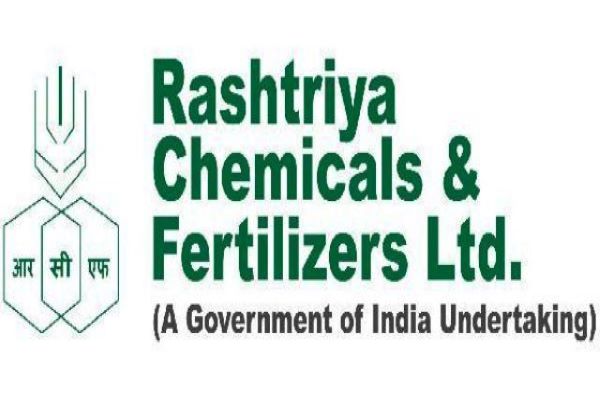In a week when the Nifty and Sensex shed more than 4%, looking towards stocks from sectors that have faced challenges for decades may not seem like the most promising investment strategy. However, sectors that have struggled for years may now hold the potential for a turnaround, thanks to supportive government policies. These aren’t short-term plays – many of these sectors might underperform for another couple of years. But for investors with patience and a higher risk tolerance, there may be opportunities worth considering.
Before diving into these sectors, it’s important to remember that these are high-risk, long-term investments. Unlike typical risk associated with chasing quick gains, you’re looking at a holding period of five years or more. It may sound counterintuitive, but there are good reasons to hang in for the long term.
High-Risk, High-Reward Sectors
Most of the stocks under discussion are from sectors that have been around for a long time but haven’t performed as expected by shareholders. Government policies, including measures announced in recent budgets, are aimed at reviving these sectors. If these initiatives succeed, the financial performance of companies in these industries could improve dramatically, potentially turning them into multibaggers. On the other hand, if the policy interventions fail, these stocks may remain underperformers.
So, what do you call it when the government takes on the role of a risk-taking entrepreneur in these sectors? Think of policymakers as patient, long-term investors, akin to angel investors with experience. Their goal is not only to revive ailing industries but also to manage the broader political economy.
Shrimp Farming: A Structural Revival in Progress?
The recent Union Budget brought shrimp farming into focus in a way not seen before. In fact, the word “shrimp” appeared ten times in the Finance Minister’s speech, signaling a serious attempt to revive the aquaculture sector. The proposed measures included everything from lowering import duties to government-backed financing through institutions like NABARD.
For investors, it makes sense to keep an eye on small- and mid-cap companies in this sector. If these policies lead to actual improvements on the ground, these companies could see significant growth. But the aquaculture sector’s history is a cautionary tale. Back in 1992-93, when India began opening up its economy, shrimp farming was expected to thrive, thanks to the country’s long coastline and growing export demand. Unfortunately, a lack of consistent government support, along with various business challenges, led to a different reality.
However, a renewed push began during the COVID-19 pandemic, when the government introduced the Pradhan Mantri Matsya Sampada Yojana. While the results of this initiative are still some way off, it shows that the government is serious about fixing the structural issues in the industry.
Some of the key steps announced in the latest budget include financial backing for breeding centers, financing shrimp farming and processing via NABARD, and reducing basic customs duties on shrimp broodstock and feed. These are structural moves that will take time to show results, but if they succeed, the industry could experience sustainable growth.
Veterinary Medicines: A Focus on Rural Income
Another sector that merits attention is veterinary medicine. As the government seeks to boost rural incomes, animal husbandry will play a crucial role in this transformation. Increased spending on animal care will benefit companies that produce veterinary medicines and animal feed. For investors, this presents an opportunity to gain exposure to a sector that is directly linked to the government’s rural development agenda.
Fertilizers: The Toughest Nut to Crack
The fertilizer industry has long been mired in problems, from supply shortages to a burdensome subsidy regime. The sector is crucial to agriculture, which makes it a politically sensitive one. While some progress has been made in recent years, much more needs to be done. Turning around the fertilizer sector is challenging, given the number of stakeholders involved and the intricacies of India’s agricultural policies. However, if the government succeeds in overhauling the sector, it could lead to sustainable gains for companies in this space.
Patience Is Key
Investors considering these sectors should be prepared for a long wait. Structural changes take time to manifest in improved financial performance. It’s possible that even during a bull market, these stocks may continue to underperform. That said, when turnarounds in such sectors do happen, they tend to be more sustainable. Only a small portion of your portfolio should be allocated to these high-risk sectors, but the potential for substantial returns exists.
Hence, while these sectors have been fraught with challenges, the current policy environment may offer a path to recovery. Companies in aquaculture, veterinary medicines, and fertilizers could eventually reward investors who are willing to take on the risk and wait for the turnaround. As always, diversification is crucial – don’t bet everything on these industries. But for those willing to take a calculated risk, these stocks could one day deliver significant wealth.

An Overview of Key Companies in the Agricultural, Poultry, and Aquaculture Sectors
In India’s evolving agribusiness and poultry sectors, several companies have established themselves as key players, each contributing to a variety of essential sectors such as animal health, aquaculture, fertilizers, and agro-products. These companies cater to the growing demand for processed food, animal health products, agricultural inputs, and seafood exports, both within India and across the globe. Here’s a look at some of these industry leaders and their diverse portfolios:
1. Venky’s (India) Limited
Venky’s (India) Limited is a well-known name in the poultry industry, offering a range of products and services. Its core business includes the production of specific pathogen-free (SPF) eggs, processed chicken, poultry breeding, and animal health products. The company operates through several segments, including:
Poultry & Poultry Products: This segment includes the production and sale of chicks, broiler and layer chickens, processed chicken, SPF eggs, and poultry feed.
Animal Health Products: Venky’s provides a variety of health products, including medicines for birds.
Oilseed: The company produces edible refined soybean oil and soybean de-oiled cake.
With manufacturing facilities spread across India, Venky’s has become a major supplier to domestic markets, focusing on sectors that impact animal and human health.
2. Godrej Agrovet Limited
Godrej Agrovet Limited is a diversified agribusiness company with a robust portfolio spanning animal feed, crop protection, palm oil, dairy, poultry, and processed food. The company’s business segments include:
Animal Feed: This includes specialized feed for cattle, poultry, and aquaculture.
Vegetable Oil: The palm oil division produces crude palm oil, palm kernel oil, and related products.
Crop Protection: Godrej Agrovet provides a wide range of crop protection chemicals, including plant growth regulators, bio-implants, and organic manure.
Dairy and Poultry Products: With subsidiaries like Creamline Dairy Products Limited and Godrej Tyson Foods Limited, the company also has a strong presence in dairy and poultry food processing.
Godrej Agrovet’s diversified portfolio, coupled with its presence in multiple markets, positions it as a key player in India’s agribusiness sector.
3. The Waterbase Limited
Waterbase Limited focuses on the aquaculture sector, particularly shrimp farming and shrimp feed production. The company’s business segments include:
Shrimp Feed: Waterbase manufactures a variety of shrimp feeds, including Bay White for Vannamei shrimp and Tiger Bay XL for tiger shrimp.
Shrimp Processing and Export: Waterbase processes and exports shrimp in various forms, such as instant quick freeze (IQF) and block frozen shrimp. The company’s products are exported to key markets like Japan, the United States, and Europe.
With a shrimp feed manufacturing plant and a shrimp processing facility in Nellore, Andhra Pradesh, Waterbase serves both domestic and international markets.

4. National Fertilizers Limited (NFL)
National Fertilizers Limited (NFL) is a leading producer and marketer of fertilizers, bio-fertilizers, and industrial products. The company operates through three major segments:
Fertilizers: NFL produces neem-coated urea, bio-fertilizers, and other agro-inputs essential for India’s agricultural sector.
Fertilizer Trading: It is involved in the trading of both indigenous and imported fertilizers.
Industrial Products: NFL produces ammonia, nitric acid, and ammonium nitrate, along with other chemicals used in various industrial applications.
NFL’s contribution to India’s agricultural growth is vital, especially in the context of meeting the country’s increasing demand for fertilizers and agro-chemicals.
5. Coastal Corporation Limited
Coastal Corporation Limited is engaged in producing and exporting aquaculture seafood products globally, with a strong focus on shrimp. The company’s product range includes:
Shrimp Products: Coastal offers a variety of shrimp types, such as sea tiger, white shrimp, and vannamei, in different forms like raw, frozen, and cooked.
Global Exports: Coastal exports shrimp to markets in the United States, Europe, Canada, and the Middle East, making it a key player in the global seafood trade.
By leveraging its extensive expertise in shrimp processing, Coastal has earned a strong foothold in the global aquaculture market.
6. Apex Frozen Foods Limited
Apex Frozen Foods Limited is an integrated producer and exporter of shelf-stable aquaculture products, focusing on shrimp. The company’s main products include:
Whiteleg Shrimp and Black Tiger Shrimp: Apex produces two primary types of shrimp—Whiteleg (Vannamei) and Black Tiger, under brands like Bay Fresh, Bay Harvest, and Bay Premium.
Export Markets: The company supplies ready-to-cook shrimp to food companies, retail chains, and restaurants in the United States, United Kingdom, and Europe.
Apex’s focus on quality and its broad customer base in developed markets have made it a leading player in the seafood industry.
7. Hester Biosciences Limited
Hester Biosciences Limited specializes in manufacturing and marketing vaccines and healthcare products for poultry and animals. Its business segments include:
Poultry Vaccines: Hester provides a wide range of live and inactivated vaccines for poultry, including those for diseases like Gumboro and avian influenza.
Animal Vaccines: The company produces vaccines for large animals, such as the PPR vaccine and Goat Pox vaccine.
Health Products: Hester offers diagnostics, feed supplements, and seromonitoring services for farms.
As a leader in poultry healthcare, Hester plays a crucial role in ensuring animal health and productivity in India.

8. Rashtriya Chemicals and Fertilizers Limited (RCF)
Rashtriya Chemicals and Fertilizers Limited (RCF) is involved in the production of fertilizers and chemicals for agricultural and industrial use. Its business segments include:
Fertilizers: RCF produces urea, complex fertilizers, bio-fertilizers, and water-soluble fertilizers.
Industrial Chemicals: The company manufactures various industrial chemicals, such as nitric acid and ammonia, which are used across industries like pharmaceuticals and textiles.
RCF’s extensive product range and market reach make it a key contributor to both India’s agriculture and industrial sectors.
9. The Fertilisers and Chemicals Travancore Limited (FACT)
The Fertilisers and Chemicals Travancore Limited (FACT) produces complex fertilizers, ammonium sulfate, and industrial chemicals. Its segments include:
Fertilizers: FACT manufactures a wide range of fertilizers, including bio-fertilizers and organic fertilizers.
Petrochemical Products: The company produces caprolactam and other industrial by-products used in various applications.
FACT’s large-scale production facilities in Cochin and Udyogamandal provide significant supply to India’s fertilizer and chemical markets.
These companies represent a cross-section of India’s agricultural, poultry, and aquaculture sectors. As India’s demand for agricultural inputs, processed foods, and healthcare products grows, these companies are well-positioned to meet both domestic and international needs. Their diversified portfolios, extensive manufacturing facilities, and growing export markets place them at the forefront of India’s agri-economy.








